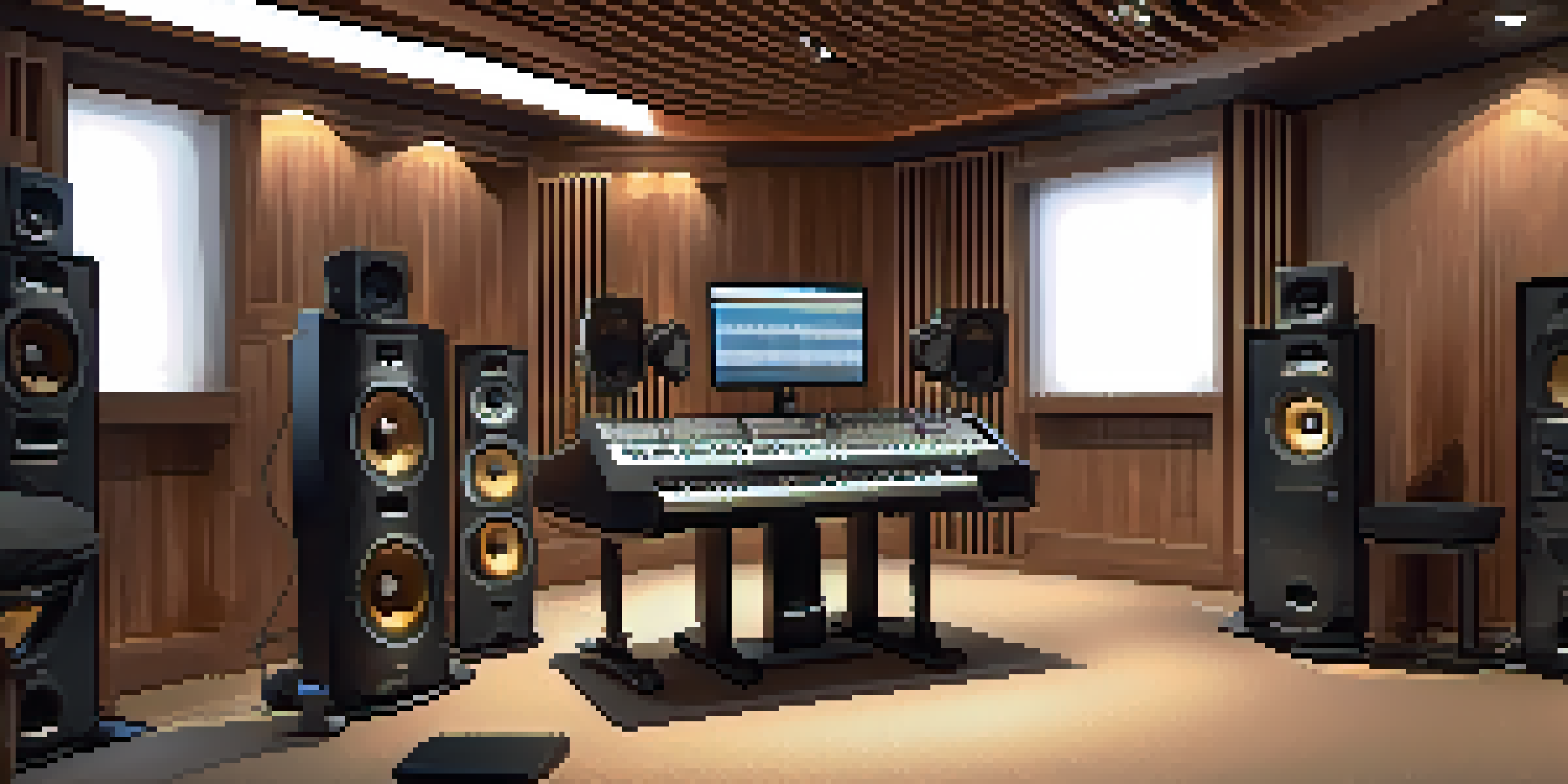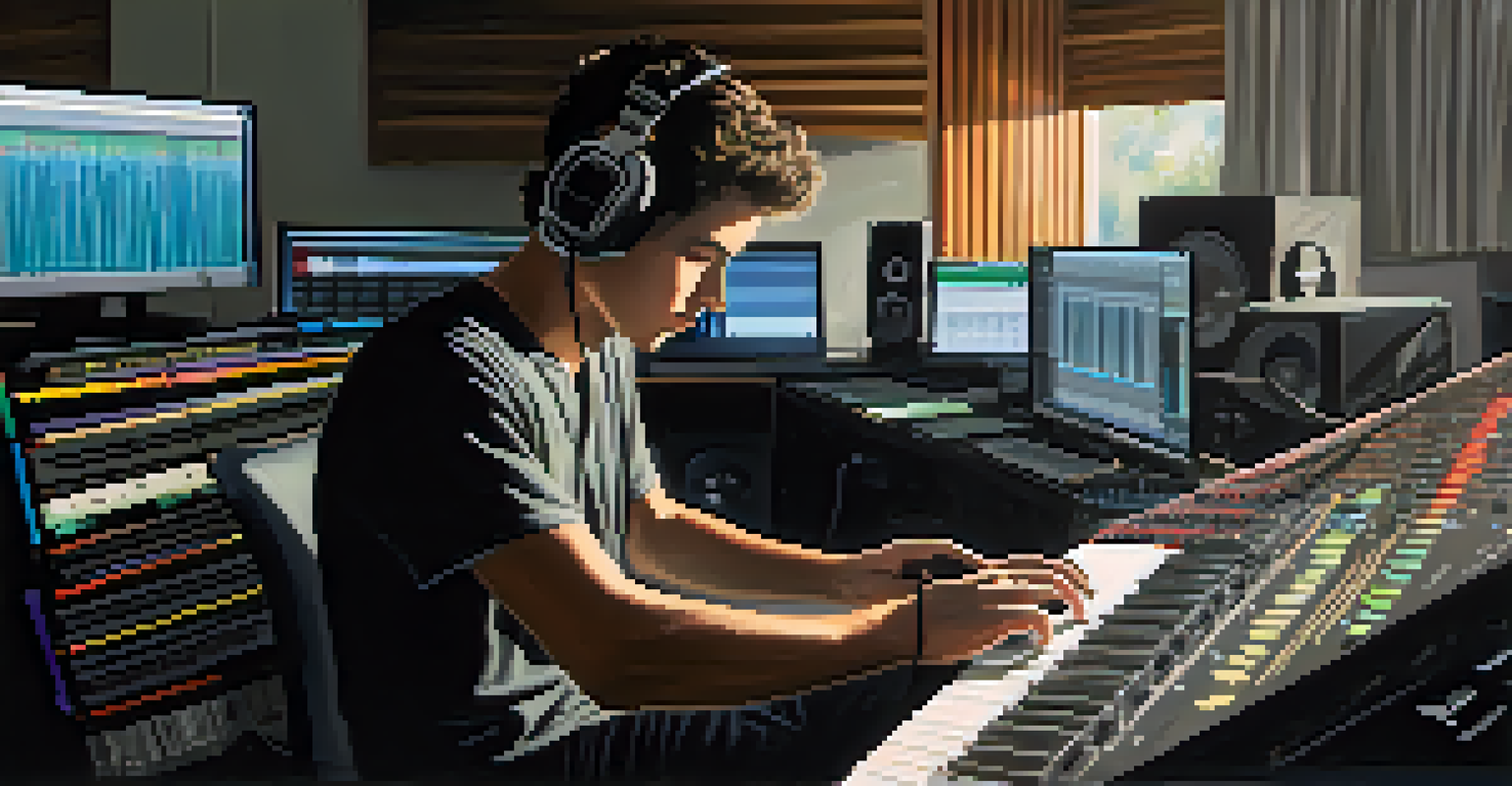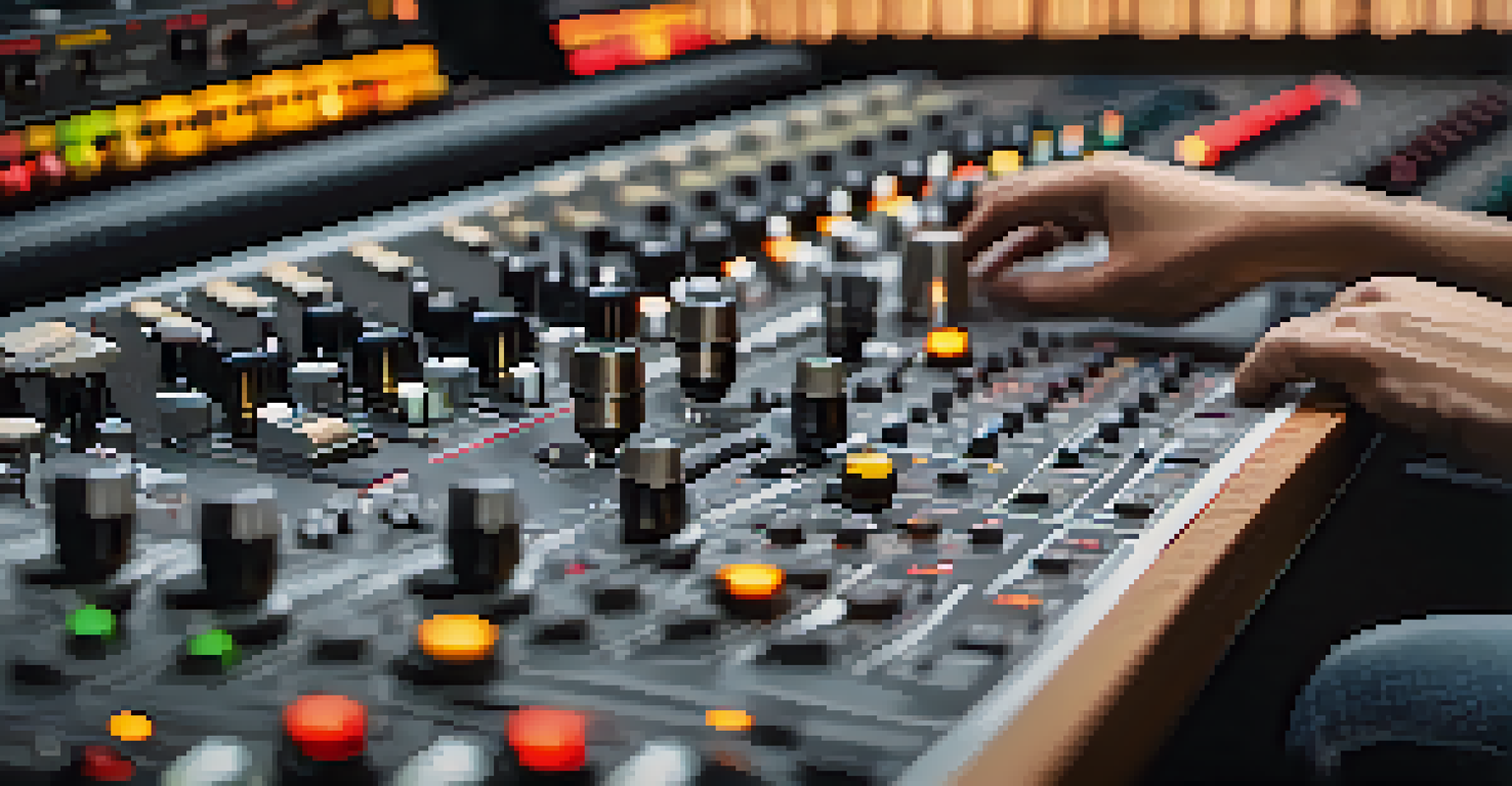The Role of Mastering in Music Production: Key Techniques

What is Mastering in Music Production?
Mastering is the final step in the music production process, where the mixed tracks are polished to perfection. It involves preparing and transferring recorded audio from a source to a data storage device. Essentially, it ensures that your music sounds its best across all playback systems, from headphones to large speakers.
Mastering is the final step in the music production process, where the mixed tracks are polished to perfection.
Think of mastering as the icing on a cake; while the cake is delicious, the icing makes it visually appealing and enhances the overall experience. This step is crucial because it addresses tonal balance, loudness, and clarity, making sure every element of your track shines.
Without proper mastering, even the best mixes can sound flat or inconsistent. A well-mastered track can elevate your music, making it competitive in today's saturated market.
Key Techniques Used in Mastering
Several techniques are employed during the mastering process, each playing a vital role in achieving a polished sound. Equalization (EQ) is one of the primary tools, allowing the mastering engineer to enhance or reduce certain frequencies to create a balanced audio spectrum. This helps to prevent any one element from overpowering the others.

Compression is another essential technique, controlling the dynamics of the track by reducing the volume of the loudest parts while boosting the quieter sections. This creates a more cohesive sound and ensures that listeners enjoy a consistent experience, regardless of the playback device.
Mastering Polishes Final Tracks
Mastering is the crucial final step in music production that ensures tracks sound their best across all playback systems.
Additionally, limiting is used to maximize the overall loudness of a track without introducing distortion. By carefully applying these techniques, mastering engineers can transform a good mix into a great-sounding track ready for distribution.
The Importance of Loudness in Mastering
Loudness is a crucial factor in mastering, especially in a world where listeners often prioritize volume. However, achieving loudness shouldn't come at the cost of dynamic range, which is the difference between the quietest and loudest parts of a track. A well-mastered song retains its dynamics while also being competitive in volume.
Without proper mastering, even the best mixes can sound flat or inconsistent.
Many listeners have grown accustomed to loud tracks, making it essential for producers to understand the loudness war—where songs are pushed to be as loud as possible. While this can make a track stand out, it can also lead to listener fatigue if overdone.
Thus, mastering requires a careful balance of loudness and dynamic range, ensuring the song is impactful without sacrificing sound quality. It's about finding that sweet spot where the music can be both powerful and enjoyable to listen to.
The Role of Reference Tracks in Mastering
Using reference tracks is a common practice in mastering, helping engineers gauge how their work compares to professionally mastered songs. Reference tracks provide a benchmark for tonal balance, loudness, and overall sonic quality. They serve as a guide, making it easier to identify areas that need improvement.
When selecting reference tracks, it's important to choose songs within the same genre and style as your work. This ensures that the comparisons are relevant, allowing the mastering engineer to make informed adjustments to achieve a similar quality.
Loudness vs. Dynamic Range Balance
Achieving the right loudness in mastering is essential, but it should not compromise the dynamic range of the music.
Moreover, listening to reference tracks at a variety of volumes can reveal how your track translates across different playback systems. This technique helps ensure that your music maintains its integrity, no matter where it's being played.
How Environment Affects Mastering Quality
The environment in which mastering takes place significantly impacts the final product. An acoustically treated space is essential for accurate monitoring, as it minimizes unwanted reflections and resonances. This allows the mastering engineer to make informed decisions about EQ, compression, and other techniques.
Without proper acoustics, subtle details in the music can be lost or misrepresented, leading to a final product that doesn't translate well across different listening environments. It's akin to painting a masterpiece in poor lighting; you might miss critical details that would enhance your work.
Investing in a quality monitoring setup and ensuring your space is acoustically treated can make a world of difference in the mastering process. Ultimately, a well-prepared environment leads to better outcomes for your music.
The Impact of Technology on Mastering
Technology has transformed the mastering process, offering tools that enhance efficiency and precision. Digital audio workstations (DAWs) provide mastering engineers with a range of plugins that can simulate analog equipment, allowing for creative flexibility. This has made the mastering process more accessible, even for independent artists.
However, while technology offers incredible advantages, it can also lead to over-processing if not used wisely. It's essential for mastering engineers to strike a balance, using technology to enhance the music without compromising its natural sound.
Importance of Environment in Mastering
A well-treated acoustical environment is vital for accurate mastering, as it allows engineers to make informed decisions about sound quality.
Ultimately, the right blend of technology and artistry is key in mastering. A skilled engineer knows how to leverage these tools to elevate the music while preserving its essence.
Common Mistakes to Avoid in Mastering
While mastering is an art, there are several common pitfalls that can negatively affect the final outcome. One of the most frequent mistakes is over-compression, which can rob a track of its dynamic range and make it sound lifeless. It's essential to use compression judiciously, ensuring that the track retains its energy.
Another common error is neglecting the importance of monitoring levels. Ensuring that the track is not clipping or distorting is vital for achieving a clean sound. Regularly referencing levels can help avoid these issues and maintain audio quality.

Additionally, rushing the mastering process can lead to subpar results. Taking the time to review and refine the work is crucial for delivering a polished, professional track ready for the world to hear.